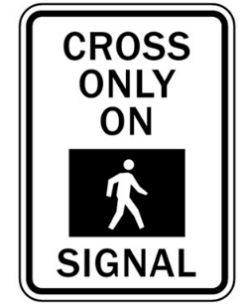April 6, 2012 Metro Magazine
Industry News
Study: Young adults driving less, using public transit more
Young adults in America are decreasing the amount they drive and increasing their use of transportation alternatives, according to a new report released today by a public interest group.
The report, "Transportation and the New Generation: Why Young People are Driving Less and What it Means for Transportation Policy," released by the CalPIRG Education Fund with Frontier Group, shows that Americans have been driving less since the middle of last decade.
“For the first time in two generations, there has been a significant shift in how many miles Americans are driving each year,” said Jon Fox, consumer advocate with the CalPIRG Education Fund. “America needs to understand these trends when deciding how to focus our future transportation investments, especially when transportation dollars are so scarce.”
Transportation and the New Generation reveals that for the first time since World War II, Americans are driving less and have been doing so since the middle of last decade. The report shows that by 2011, the average American was driving 6% fewer miles per year than in 2004.
This trend away from driving is even more pronounced among young people. The average young person (age 16-34) drove 23% fewer miles in 2009 than the average young person in 2001. The report also notes that a growing number of young Americans do not have driver’s licenses; from 2000 to 2010, the share of 14-year-olds to 34-year-olds without a license increased from 21% to 26%.
“The shift away from six decades of increasing vehicle travel to a new reality of slow-growing or even declining vehicle travel has potentially seismic implications for transportation policy,” said Benjamin Davis, analyst with Frontier Group. “It calls into question the wisdom of our current transportation investment priorities.”
According to the report, between 2001 and 2009, the annual number of miles traveled by 16 to 34 year olds on public transit, such as trains and buses increased by 40%.
“I would rather have good public transportation options than the hassle and expense of driving a car,” said Sofie Karasek, a freshman at UC Berkeley. “It’s time for our leaders to stop debating how much to spend expanding our grandparents’ transportation network and start figuring out how to build the infrastructure that my generation will need for the future.”
How Millennials Feel about Cars, Public Transit and Electric Vehicles
Neil Chambers
Transportation / Public Transportation
March 6, 2012
Since late September, I’ve traveled across the United States talking to students about their thoughts on the green movement and major concerns like climate change, energy, transportation and green buildings. Cars come up over and over. They are not impressed with the options for alternative transport. If automobile companies don’t listen to these concerns, they will be the losers when the upcoming generation makes up the dominant segment of the global market.
Millennials are smart, sustainability-minded and savvy consumers. They want to do their part to save the planet, but don’t want to spend more money to do it. At least, that’s what I’ve heard from college students from every region in the U.S. They are unhappy about the problems associated with vehicles, from big ones like pollution from cars and trucks to the smaller pains like finding parking. They hate waiting in traffic and don’t love the cost of maintaining vehicles. They dislike the amount of land used for parking lots, roads and highways, and they loath the alternatives car companies are offering.
During my stops at universities, I’ve been encouraged by two things: how hungry students are to learn and implement sustainability, and how they incorporate green behaviors into their daily lives. One way students integrate green behavior is to take public transportation. Of those not taking public transit, they commute by walking or ride a bike. In most of the cities I’ve visited, the only widespread option is bus lines. The vast majority of students tell me they will take a bus even if that means taking two to three times longer to arrive at a destination.
Unfortunately, public transportation in most cities doesn’t resemble anything like the iconic New York City Subway system. In New Orleans, it’s streetcars, which are incredibly slow. Places like Atlanta and Los Angeles have plans underway for light rail systems, but right now only have buses. During a sustainability fair at UCLA, a student explained that taking a bus usually increases her travel time by 60 to 90 minutes. But she and many like her happily do it. Why? Because it frees them up to read, study, do homework, text friends, engage social media and, well, “just stare off into space” as one student put it.
Freedom from a steering wheel is not the only factor playing into the great migration of millennial to public transportation. Another contributing influence is tight budgets. It’s not news to find out that college students don’t have lots of spending money, but today they have less than before. Their parents also don’t have as much available cash to give them, so public transportation and human-powered options like bicycles and walking are “awesome” choices. At schools in Portland, Seattle, and Asheville, NC, many students told me that attending a university that had a walkable campus was a big part of their decision.
This does not, however, mean they don’t own cars. Only a very small percentage, don’t. Interestingly, almost none of them own alternative vehicles such as a Prius other hybrid vehicle, or electric vehicle. Few expressed glee at the idea of potentially buying one either. The reason? Two things: the sticker price and expense of maintenance. Replacing a hybrid battery can be very expensive. Most of them have standard gasoline cars and don’t feel bad about it. They feel that other behaviors such as eating organic food, buy local products, recycling, composting, riding a bike and taking public transportation offset any negatives to using petroleum from time to time.
When asked about plug-in electrics and battery powered vehicles (EV), students are extremely skeptical. They question the extent of the positive impact of EVs as well as the reliability of the battery technology. Some expressed concern that EVs displace the pollution from the tailpipes to coal power plants hundreds of miles away. For others, it is an issue of timing and convenience: “Plug-in electrics can take up to 6 to 8 hours to charge – that’s a non-starter for me” says one student I spoke with at Lewis and Clark College.
Automobile manufacturers should listen to what these college kids are saying, because these are the folks that will be exerting increasing control on the market in the next five to ten years. They are going to make purchase decisions along very specific lines. It seems they will buy and/or use the most sustainable, least troublesome and most affordable options available—a doctorial student told me his ideal car is his road bike.
Some mentioned that they do like the next generation of cars being produced by companies smart, Mini and the Fiat. These micro cars are a dream to park especially in an urban setting. For full disclosure, smart is a sponsor of my book tour, and I’ve been driving one all over the country over the past six months. These cars are affordable, get good gas mileage and, by being smaller than standard cars, have less of a life cycle impact. Most people don’t initially love the idea of only having two seats. They want room for friends, or during moving day at the end of a semester. But when they realize more than 70% of the time people drive alone, two seats seem perfectly right-sized.
Smaller cars, like smaller homes, take less energy, water and materials to build. If everyone in the US drove a micro car, we’d need about half of the parking area. Imagine if half of all the parking lots were converted to green space.
That said, the up-and-coming generation should put car companies on notice. If the federal and state government (or private enterprises) can get it together to construct rapid public transit systems, daily car use could be a thing of the past. A world of mass transportation, micro cars and more parkland could be on the horizon. More walking-centric cities with lots green spaces could come from people’s experience at college campuses. By accident or intentionally, American universities are serving as both a model and an inspiration for the future of transporta

Citizens Taking Action
for public transit and passenger trains


